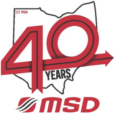GUIDANCE FOR RE-OPENING BUILDINGS ASHRAE https://www.ashrae.org/technical-resources/resources is a global professional society of over 55,000 members committed to serve humanity by advancing the arts and sciences of heating, ventilation, air conditioning, refrigeration and their allied fields. ASHRAE has established a Task Force to help deploy technical resources to address the challenges of the COVID-19 pandemic and possible future epidemics as it relates to the effects of heating, ventilation, and air-conditioning (HVAC) systems on disease transmission. Guidance and building readiness information for different operational conditions have been developed for several building types, including commercial; residential; schools and universities; and healthcare facilities, as well as general guidance for re-opening buildings. ASHRAE’s reopening guidance provides practical information to help your HVAC system mitigate the transmission of SARS-CoV-2.
Some general recommendations are provided below. Please consult the full guidance for important details and consider reaching out to qualified design professionals for additional analysis as needed.
- Systems Evaluation: Inspect equipment, systems, and controls to check for existing issues. Evaluate outdoor air ventilation for compliance with design requirements. Make note of existing filters’ MERV rating. Analyze each HVAC system for appropriate engineering controls to improve its potential to reduce virus transmission. Check calibration per the guidance in ASHRAE Guideline 11-2018, Field Testing of HVAC Control Components.
- Inspection and Maintenance: Verify HVAC systems function per design intent using ASHRAE Standard 180- 2018, Standard Practice for Inspection and Maintenance of Commercial Building HVAC Systems, or equivalent. Ensure that energy recovery devices can be operated safely.
- Ventilation and Filtration: Confirm systems provide required minimum amounts of outdoor air for ventilation and that the filters are MERV 13 or better filters for recirculated air. Combine the effects of outdoor air, filtration, and air cleaners to exceed combined requirements of minimum ventilation and MERV-13 filters.
- Building Readiness Plan: Create a plan to document the intended operation for the building, highlighting the mitigation strategies, temporary and permanent, to be implemented for the facility. o Non-HVAC Strategies: Note if face masks are required or recommended; implement social distancing, establish occupancy levels, and establish cleaning and handwashing requirements. o HVAC Strategies: Increased ventilation, improved filtration, and/or air cleaning technologies.
- Pre- or Post-Occupancy Flush with Outdoor Air: Focus on removing bio-burden pre-or post-occupancy of the building. Flush building for a time required to achieve three air changes of outdoor air (or equivalent, including effect of outdoor air, particulate filtration, and air cleaners).
- Modes of Operation for the Building: Operate in Occupied Mode when people are present in the building, including times when the building is occupied by a small fraction of its allowable capacity.
- Water Systems: In general, building water systems should be flushed before they are reopened. Refer to EPA Guidance on this topic here and ASHRAE Standard 188-2018, Legionellosis: Risk Management for Building Water Systems, and Guideline 12-2020, Managing the Risk of Legionellosis Associated with Building Water Systems.
- Energy Savings: During Evaluation and Inspection, determine optimized control strategies that can be implemented per ASHRAE Guideline 36-2018, High-Performance Sequences of Operation for HVAC Systems. HVAC&R systems play an important role in minimizing the spread of harmful pathogens, and ASHRAE is ready to provide technical resources and answer questions.
The most up-to-date ASHRAE COVID-19 guidance can be found https://www.ashrae.org/file%20library/technical%20resources/covid-19/guidance-for-re-opening-buildings.pdf



